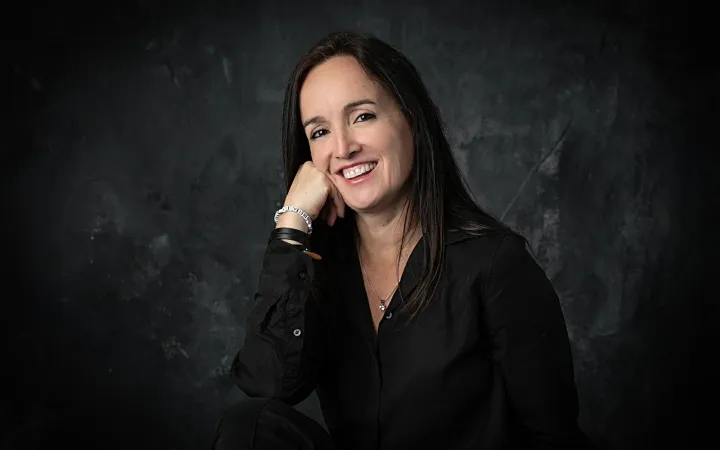
Por Bárbara Anderson
Una de las metas de la gestión de Luisa María Alcalde Luján al frente de la Secretaría de Trabajo y Previsión Social (STPS) fue la inclusión laboral para la cual presentó formalmente hace dos años su Programa Nacional de Trabajo y Empleo para las Personas con Discapacidad 2021-2024. En la presentación su postura fue clara: “la inclusión laboral para las personas con alguna discapacidad es muy compleja. Viven discriminación derivada de prejuicios y falta de información respecto a su condición. Los empleadores presuponen, erróneamente, que su contratación implica altos niveles de ausentismo y altos costos en la adaptación al puesto de trabajo. Este contexto hace difícil su inserción laboral a empleos formales y como resultado les impide mejorar sus competencias laborales y su empleabilidad”.
Sin embargo los resultados de su esfuerzo a nivel federal no mueven ninguna estadística de manera positiva, ni ha dejado un cimiento profundo al respecto.
En su reporte de actividades de todo 2022 (primer balance de su Programa) las cifras son menos que modestas. Ahora, ya a cargo de la Secretaría de Gobernación en reemplazo de Adán Augusto López, quedan menos oportunidades en su ex cartera, a poco más de un año para dar por terminado el sexenio.
La Secretaría de Trabajo asesoró el año pasado en inclusión laboral a 250 empresas de todo el país, a buena parte de ellas se le otorgó el Distintivo en Responsabilidad Laboral (DRL) pero sólo logró ubicar a 3,430 personas trabajadoras con discapacidad en algún empleo (1,545 mujeres y 1,885 hombres).
¿Esto es poco o es mucho?
Esas 250 empresas representan un minúsculo porcentaje dentro de las 4.9 millones de establecimientos comerciales registrados en el país.
Según los datos del Censo 2020, hay 20 millones 838 mil 108 mexicanas y mexicanos con alguna discapacidad o limitación. De ellas, 2.4 millones están en edad laboral (38 por ciento) y sólo 30 por ciento tiene empleo (720 mil).
Es decir que hay 1.68 millones de personas con discapacidad fuera de la población económicamente activa. Poniendo en contexto, el Programa lanzado por Luisa María Alcalde permitió que apenas 0.2 por ciento de quienes viven con una discapacidad y buscan empleo lo consiguieron gracias a su gestión en la STPS.
Otra opción de inclusión laboral es la generación de experiencia, un baluarte de otro programa dentro de su (ahora ex) Secretaria: el Programa Jóvenes Construyendo el Futuro (PJCF).
Este plan impulsa la incorporación de jóvenes de 18 a 29 años que no estudian y no trabajan, en actividades económicas a través de su capacitación en centros de trabajo que participan en el Programa y donde el propio gobierno federal se encarga del sueldo de los pasantes, que equivale a 5,258 pesos por mes, durante 12 meses, y cobertura del IMSS.
Si evaluamos sólo 2022, el año pasado este Programa pagó el sueldo a 214,788 jóvenes de los cuáles solo 3,688 confirmaron tener alguna discapacidad (1,862 hombres y 1,826 mujeres).
Es decir que en este plan de primer empleo apenas 1.7 por ciento de los beneficiarios fueron jóvenes que viven con alguna condición de vida.
Otra acción con poco brillo de la Secretaria de Trabajo fue su estrategia Abriendo Espacios, del Programa de Apoyo al Empleo (PAE) que anunciaba la asesoría a personas con discapacidad que se encontraban en búsqueda de un empleo. Cada uno de los interesados podía aplicar a sus “Evaluaciones Valpar,” que permiten identificar las habilidades de las personas con discapacidad y ayudarlas a vender mejor su perfil en las empresas privadas.
En todo 2022 evaluaron a 16,103 “personas buscadoras de trabajo con discapacidad” (sic), de las cuales se logró colocar en un empleo a apenas 2,804.
Leyes que son letra muerta
Además de sus propios programas y planes, la STPS impulsó las reformas a la Ley Federal Laboral, una de ellas relacionada directamente con la inclusión laboral. El 22 de febrero de 2022, el Senado finalmente aprobó un capítulo dentro de esa reforma que indicaba que “las empresas con más de 20 trabajadores deberán tener al menos cinco por ciento de los puestos ocupados por personas con discapacidad”. “La ley regulará temas de contratación, capacitación, formación y profesionalización de la fuerza laboral con alguna discapacidad”.
¿Qué ha pasado hasta ahora? Nada. Esta (como muchas otras legislaciones) no pone ni plazo a las empresas para cumplir con este mandato, ni presenta cómo serán y cada cuánto tiempo las autorías que la STPS debería realizar a las empresas para constatar que se esté cumpliendo con este mandato de inclusión laboral.
En la última edición de la Encuesta Nacional sobre Discriminación (ENADIS) 2022, el 33.8 por ciento de la población mayor de 12 años con discapacidad en nuestro país fue discriminada. Esto es superior a 2017 (+ 37 por ciento) donde el 24.6 por ciento de las pcd manifestaron haber sufrido algún acto en su contra.
Dentro de las tres principales razones por las cuales han sido víctimas de discriminación se encuentra precisamente la falta de oportunidades laborales. En 2022, de la población de 12 años y más con discapacidad, 44.9 por ciento percibió que le discriminan mucho al momento de buscar empleo.
Esta columna fue publicada en el sitio de noticias sobre discapacidad de Yo También.

Las opiniones expresadas son responsabilidad de sus autoras y son absolutamente independientes a la postura y línea editorial de Opinión 51.






Comments ()